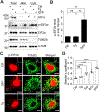The HRI branch of the integrated stress response selectively triggers mitophagy
- PMID: 38340717
- PMCID: PMC11062084
- DOI: 10.1016/j.molcel.2024.01.016
The HRI branch of the integrated stress response selectively triggers mitophagy
Abstract
To maintain mitochondrial homeostasis, damaged or excessive mitochondria are culled in coordination with the physiological state of the cell. The integrated stress response (ISR) is a signaling network that recognizes diverse cellular stresses, including mitochondrial dysfunction. Because the four ISR branches converge to common outputs, it is unclear whether mitochondrial stress detected by this network can regulate mitophagy, the autophagic degradation of mitochondria. Using a whole-genome screen, we show that the heme-regulated inhibitor (HRI) branch of the ISR selectively induces mitophagy. Activation of the HRI branch results in mitochondrial localization of phosphorylated eukaryotic initiation factor 2, which we show is sufficient to induce mitophagy. The HRI mitophagy pathway operates in parallel with the mitophagy pathway controlled by the Parkinson's disease related genes PINK1 and PARKIN and is mechanistically distinct. Therefore, HRI repurposes machinery that is normally used for translational initiation to trigger mitophagy in response to mitochondrial damage.
Keywords: autophagy; integrated stress response; iron metabolism; mitochondria; mitophagy; organelle quality control.
Copyright © 2024 Elsevier Inc. All rights reserved.
Conflict of interest statement
Declaration of interests The authors declare no competing interests.
Figures







References
MeSH terms
Substances
Grants and funding
LinkOut - more resources
Full Text Sources
Molecular Biology Databases

